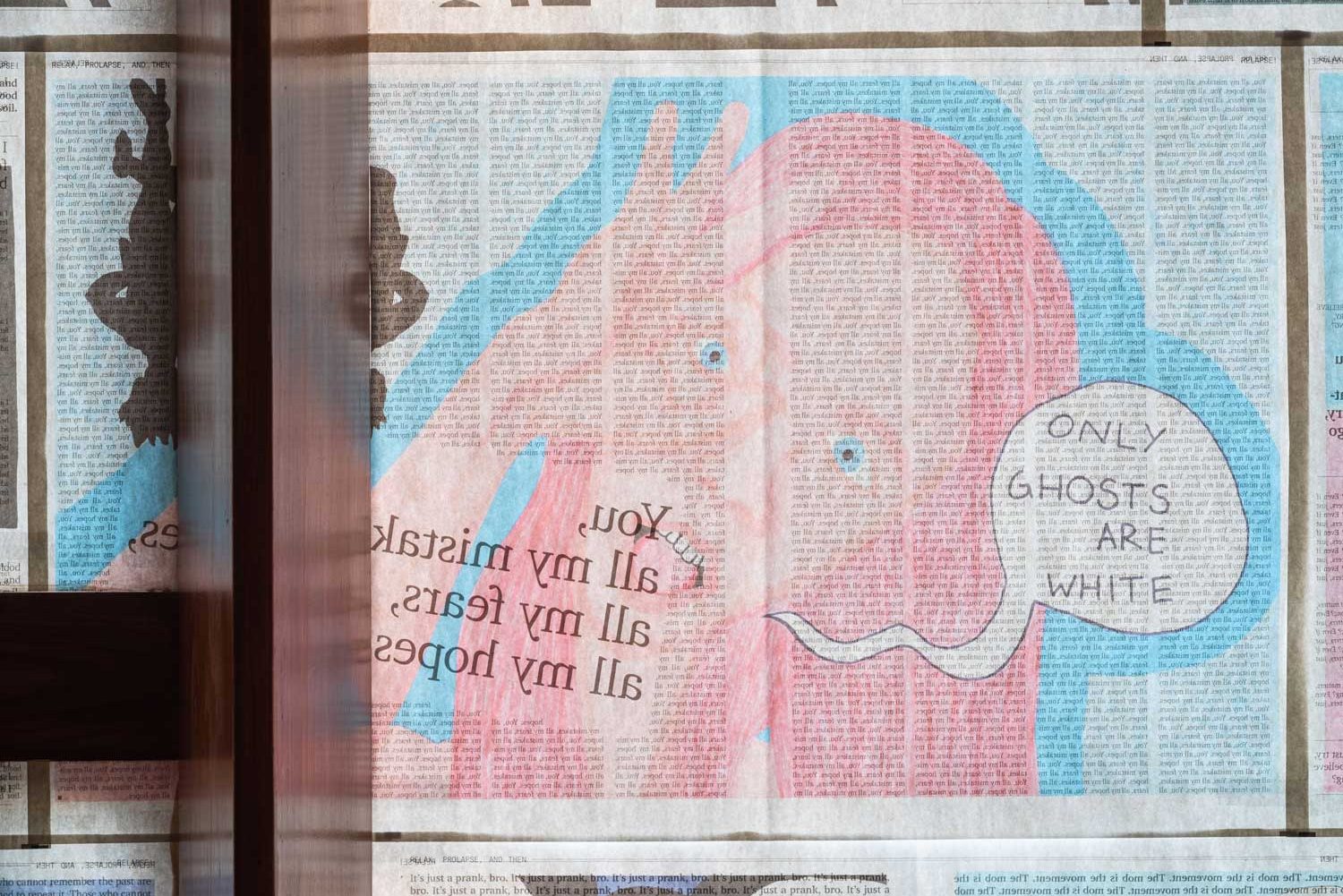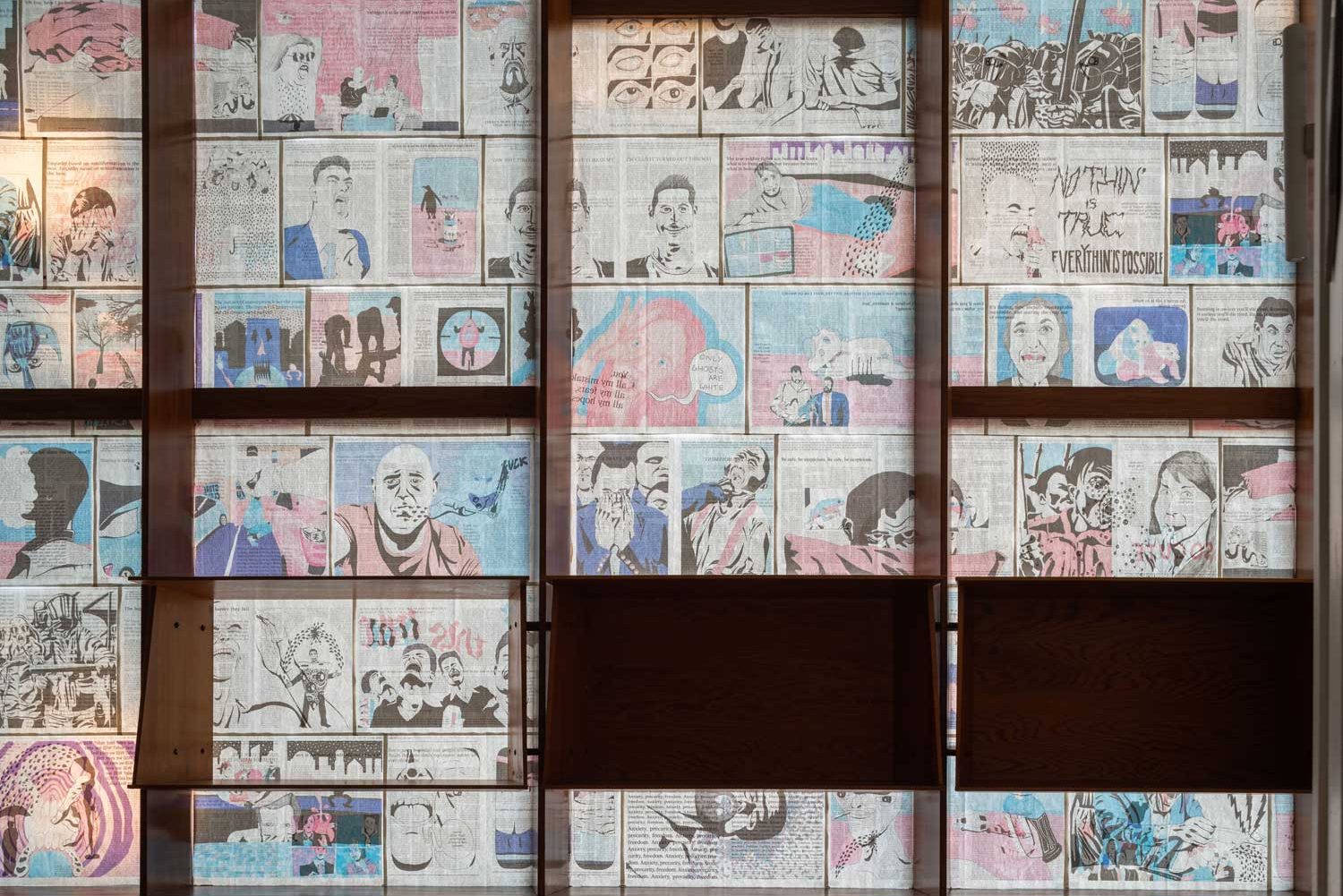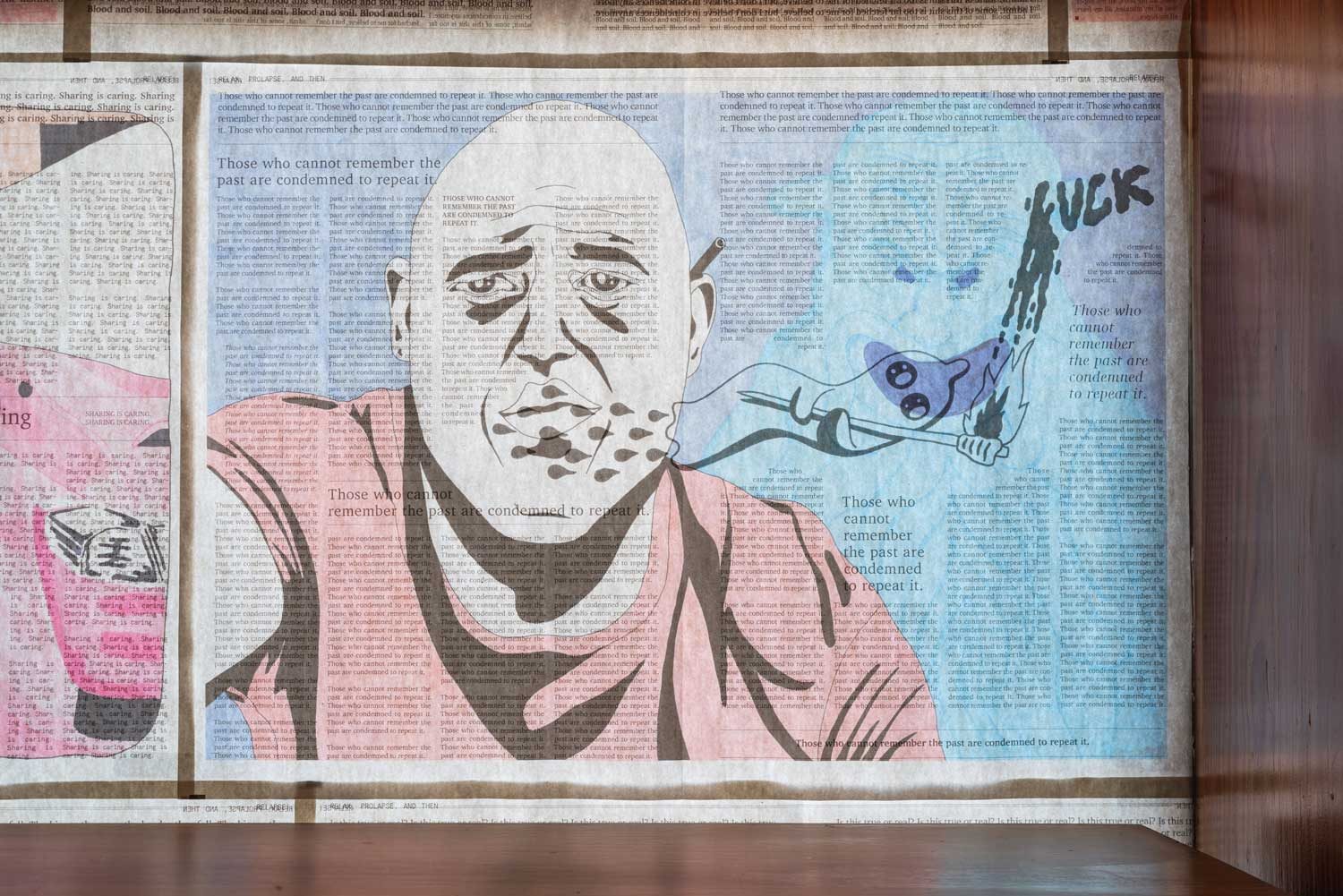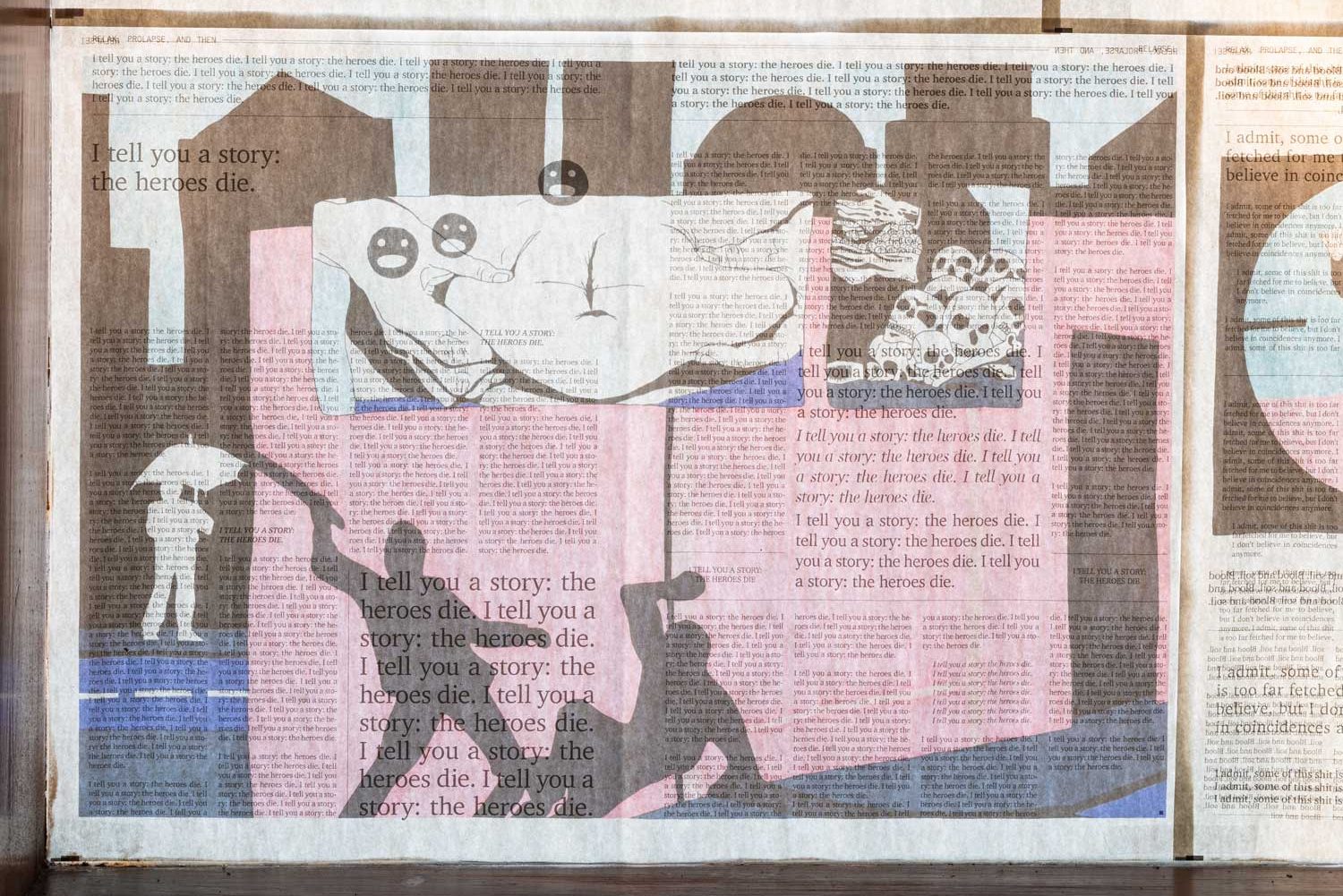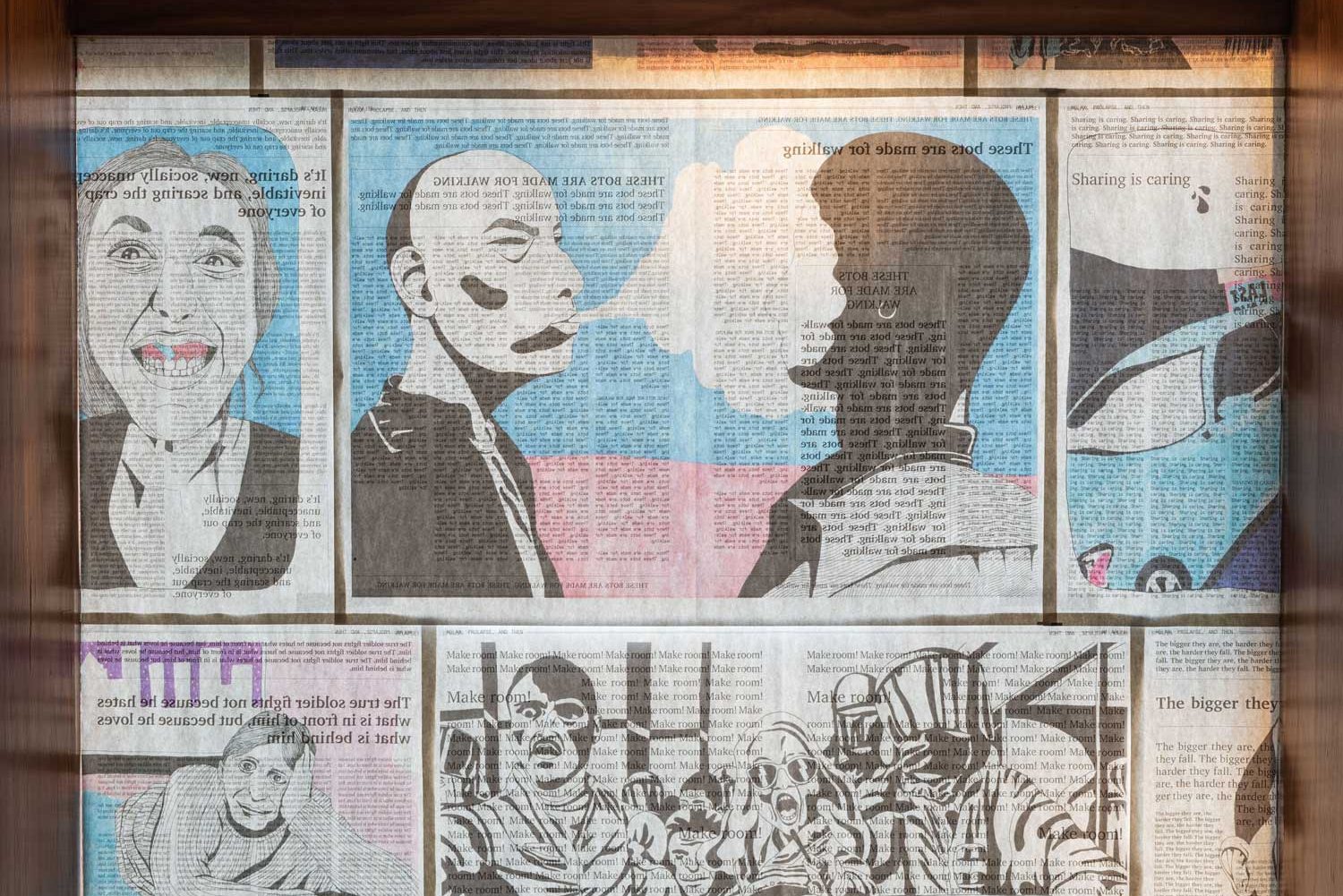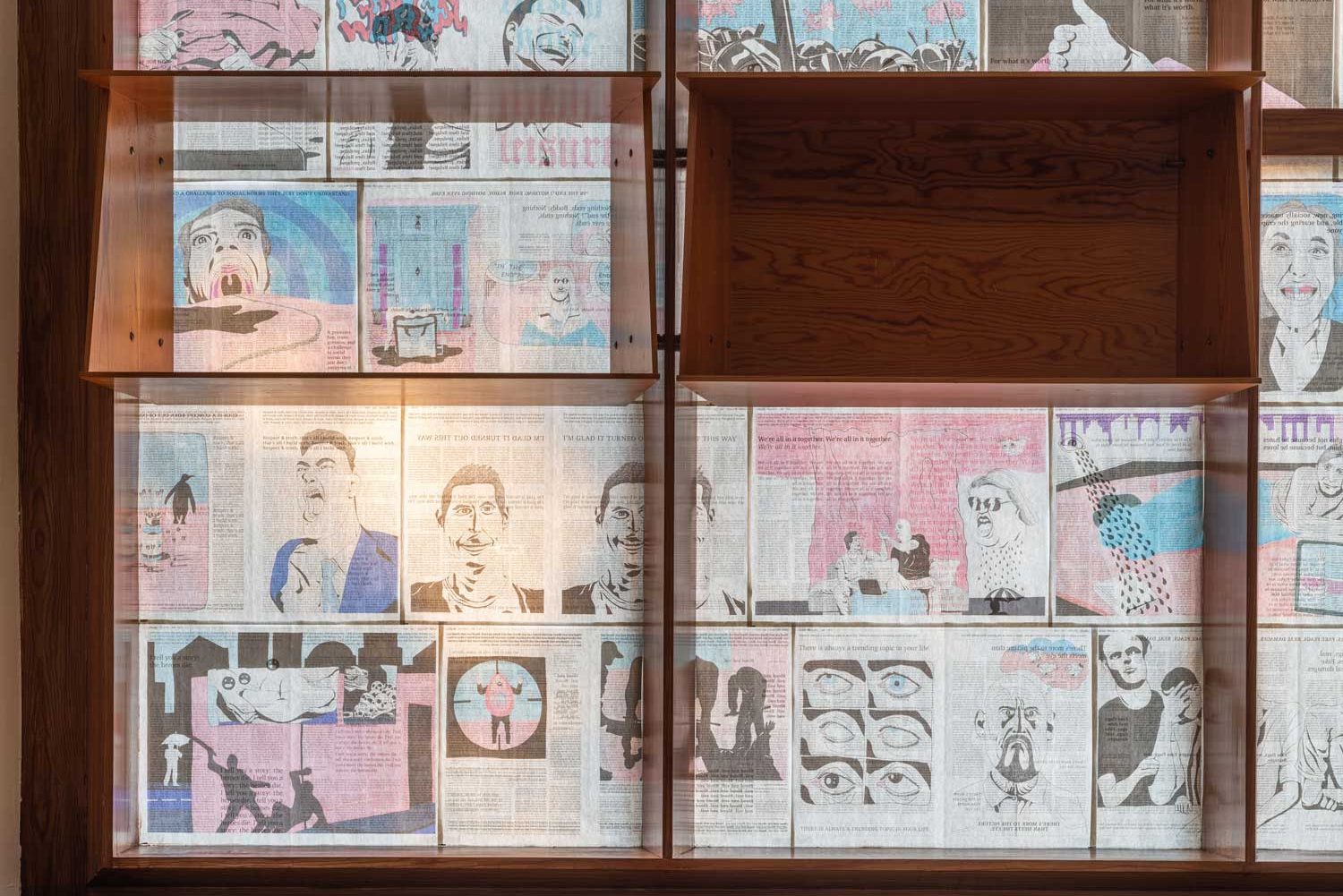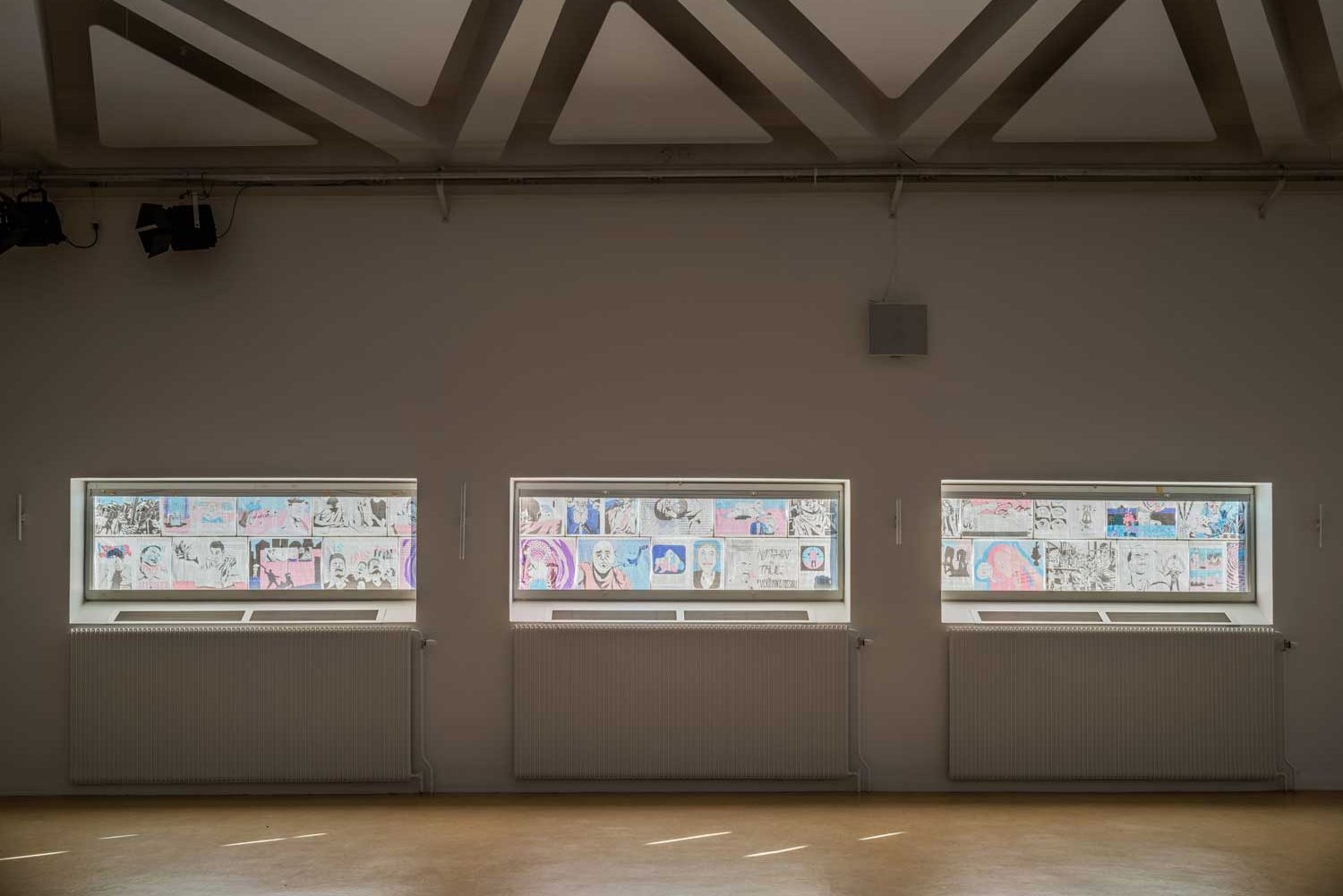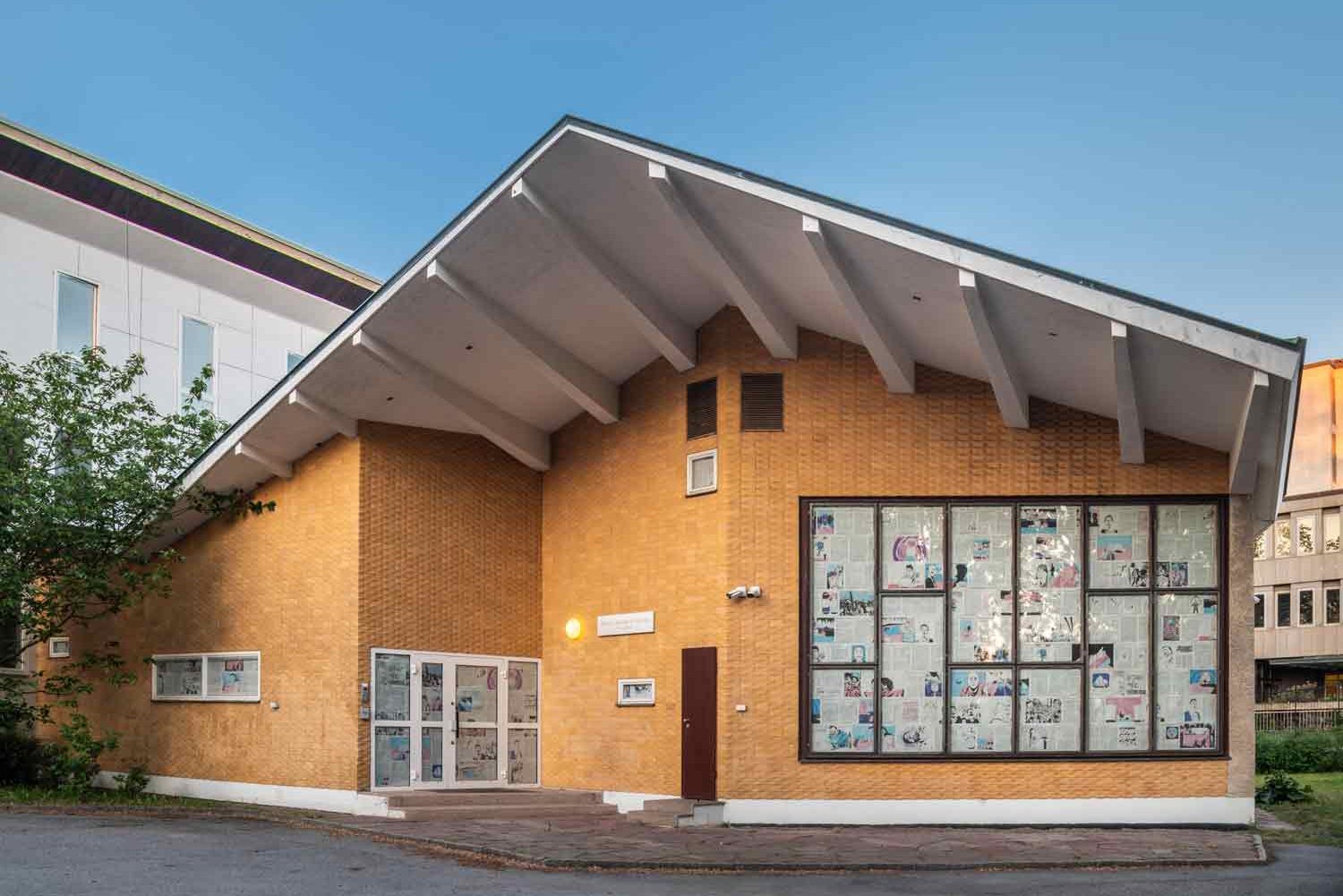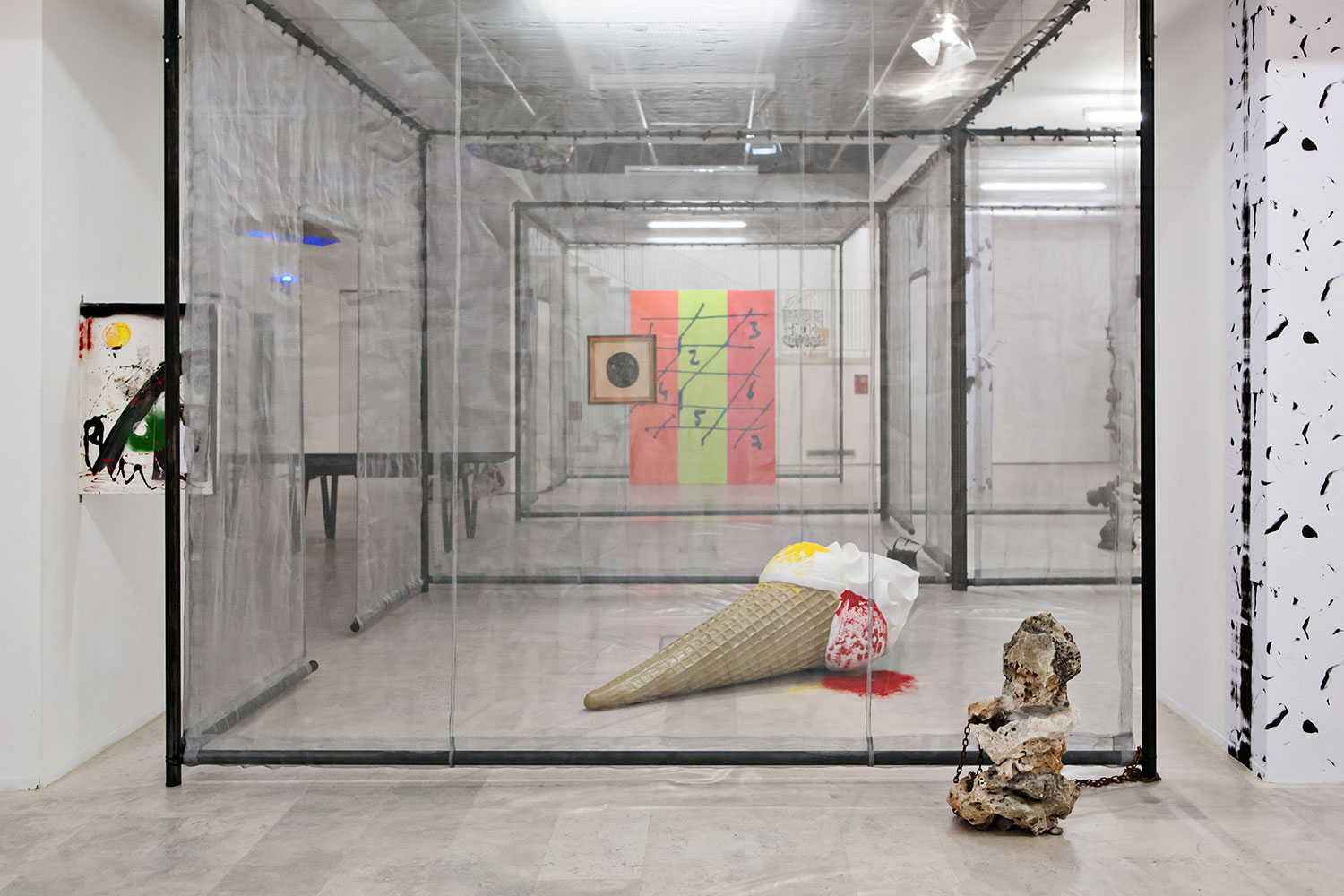“Shoegaze” is a series of exhibitions taking place at the Italian Cultural Institute in Stockholm, in partnership with Konstfack. Envisaged by the Italian curator Vasco Forconi, “Shoegaze” challenges a young generation of artists based in Sweden and in Italy to activate, with new works, the front façade and auditorium of the Italian Cultural Institute building designed by the groundbreaking architect and designer Gio Ponti. Stefano Serretta is the second exhibition within the series.
The Institute has been resignified by Stefano Serretta’s witty environmental intervention. Performing a radical gesture of sorts, the artist has covered with a comic-styled newspaper all the windows of the building, including the oversize window in front, putting an end to the dialogue between the inside and the outside, the public and the private that these fixtures facilitate. The resulting image recalls the failure of commercial activity and bankruptcy that spread across Europe during the peak of the so-called financial crisis. Once inside, Serretta furthers his nullifying action by emptying the space of the auditorium. The translucent nature of the polychromatic sheets of newspaper allow for the sunlight to invade the vacuum created in the interior of the building, creating an effect reminiscent of the interiors of medieval churches and cathedrals — sacred places for reflection. Yet, having nowhere where to sit for individual contemplation, viewers instead interact with the sheets of newspaper covering the windows.
Diligently researched and mindfully crafted, Serretta’s newspaper presents a number of characters, symbols, and slogans stemming from some sort of contemporary popular culture and aesthetics shaped on online discussion boards that function as hubs for alt-right rhetoric. These apparently innocuous online platforms, open to anonymous communication, are at the center of new political discourses and mythologies in the service of long-standing extremist ideologies. Informed by a sense of pop culture, the artist’s drawings appropriate some of the images that flood these sites, and transform them into grotesque figures. The obsessive repetition of different quotes serve as autonomous mantras, subverting their initial meaning and bringing to the fore an amalgam of sarcasm and fear. Relapse, the name of the newspaper, veers between fiction and verisimilitude to evoke a timeless idea of psychopathological illness within society. Thus Serretta ironically invitesus to observe the strata of meaning beneath these new cultural phenomena and visual codes.

